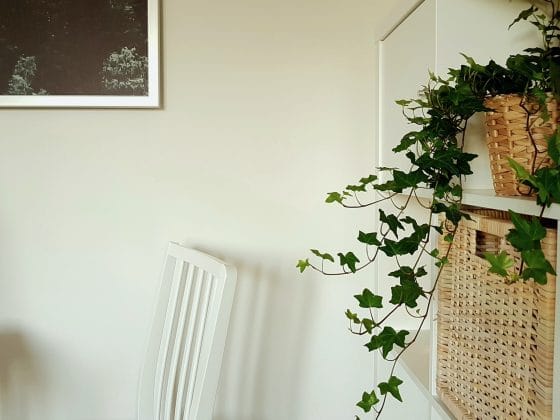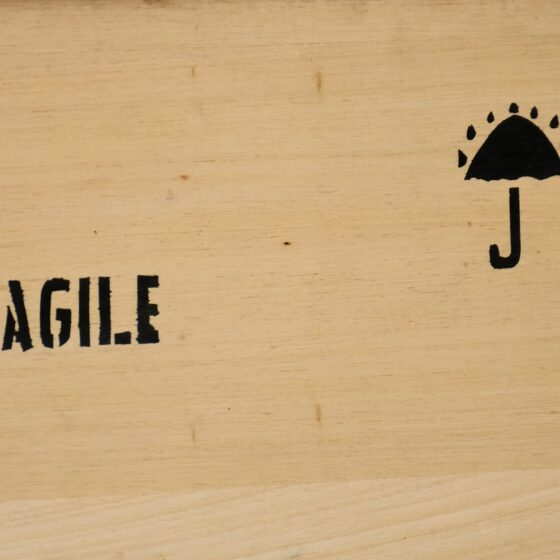Easter can mean the feast of feasts for Christians, a mini-holiday for others, or just a simple day of the new season for everyone else. Regardless of where you stand today, Easter facts show that it connects us all, on a deeper, pre-Christian level.
Easter is, first and foremost, a celebration of life and its victory over death. As such, the festivity itself and some of its customs and symbols are rooted in paganism (except for chocolate treats, of course).
Candy-eating, prayer, or whatever your relation to Easter, these stats and facts will help you fully embrace it, in every aspect.
Top 10 Key Easter Facts That You May Have Missed
- One-third of the world’s population celebrates Easter.
- Easter has a moveable date since A.D. 325.
- The first-ever Easter, scholars believe, was on April 5.
- The world’s most expensive Easter chocolate egg is worth $10,000.
- The Cadbury Creme Egg is the most popular Easter egg in the world.
- Making family dinner is the favorite Easter activity of American parents.
- 80% of the rabbits purchased around Easter end up abandoned.
- Dancing on Easter is banned in Germany.
- Candy is fourth on the American buying list for Easter.
- The biggest-ever Easter bunny weighed approximately 9,360 lbs.
Religious Facts About Easter
All religions are interlaced and extraordinary in their own way, while still having many things in common.
What makes Christ special is the fact that he rose from the dead after being crucified. But did you know that according to the Bible, he wasn’t the only one who resurrected?
Here’s what else you might have missed about Easter from the aspect of religion.
1. One-third of the world’s population celebrates Easter, facts from religious records suggest.
(PEW)
31.1% of the world population in 2020 (2.4 billion people) declared as Christian and celebrated Easter.
Traditions for the celebration vary across countries and across different branches of Christianity. Nevertheless, one thing stays the same—Easter is Christians’ most important festival.
2. 95 countries worldwide celebrate Easter.
(Kwintessential, Appogee HR)
95 out of the 195 countries in the world celebrate Easter in some way, Christian Easter facts show. Actually, in countries with a predominantly Christian population, Easter Monday (the day after Easter) is a public holiday.
Some even celebrate Good Friday—the day that honors the crucifixion of Jesus Christ. For example, in the US, 12 out of their 50 states celebrate Good Friday as a public holiday.
3. In 12 countries around the globe Orthodox Easter is a public holiday.
(TDAS, Lantern Club, Office Holidays)
Only a few countries adhere to the Orthodox branch of the Christian religion, Easter facts reveal.
But let’s not forget that the biggest country in the world, Russia, is among these. The others include Ukraine, Romania, the Republic of North Macedonia, Lebanon, Greece, Cyprus, and Bulgaria. In total, 12% of Christians celebrate Orthodox Easter.
4. Easter has an official flower—the Easter lily.
(1800 flowers)
One of the more interesting Easter lily facts is that it has been a part of the Christian religion ever since its beginnings. Known also as the “white-robed apostle of hope,” the lily flower is mentioned several times in the Bible.
For example, it is said that lilies sprung from the place where Eve’s tears of remorse hit the ground when she and Adam were banished from the Garden of Eden.
Important Easter History Facts
Easter has a two millennia-long celebration history, but its date has been movable since the year 325. Historians and other scholars have worked for ages to get to some precise facts and unveil as much as they can of the mystery surrounding Easter. Read some of their findings here.
5. Easter has a moveable date since A.D. 325.
(OSU)
The First Council of Nicaea in A.D. 325 decided upon Easter’s Day celebration. Ever since, it has been held on the first Sunday following the full moon after the March (vernal) equinox.
Calculations are made following the Gregorian calendar for each Catholic, Easter facts confirm. Orthodox Christians follow the Julian calendar, with a current discrepancy of 13 days.
6. The first-ever chocolate eggs appeared in the early 19th century.
(BBC)
While it is impossible to know who made the first one, Easter facts in history place the emergence of chocolate eggs in Europe in the early 19th century, or just around the time the first espresso machines were invented.
During this period, confections started appearing in France and Germany. These seem like the perfect suspects for the precursors to the chocolate egg.
Anyway, these chocolate eggs were not the ones we came to love today. Back then, they were hard and bitter.
7. The Easter Bunny is half a century old, at most.
(NBC News, TEB)
Scientific facts about the Easter bunny show a connection dating back to pagan times. However, the fluffy, egg-laying creature that we know today has a more recent history.
In the pagan era, hares were offered for the antecedent of Easter—the feast for the spring goddess Eostre. The first legends about an Easter bunny appeared in the 1500s.
Hence, the birth time of the Easter Bunny is sometime between 1515 and 1615. But its egg-laying trait came about in the late 17th century, after a written legend with this storyline.
8. The first Easter, scholars believe, was on April 5.
(CP)
So far, all the interesting Bible facts about Easter couldn’t break the mystery but most scholars agree that it happened in the spring of A.D. 30 or 33.
Among these scholars are Köstenberger and Taylor, who tried to pinpoint the exact time when the crucifixion and resurrection of Jesus happened in their book. They concluded that the most likely date for Jesus’s resurrection is the 5th of April.
9. Easter stats reveal that the egg-rolling tradition in the White House started in 1878.
(WHH)
On April 22, 1878, the White House opened the grounds for the first-ever Easter egg roll. We owe this tradition to President Rutherford B. Hayes.
ln 1885, the indoor reception was added to the tradition. That year’s egg-roll participants met President Grover Cleveland.
Record-Breaking Facts About Easter Eggs
The egg, a well-known symbol of rebirth, life, and the triumph over evil, has been part of human customs at least since the middle ages. But did you know that Orthodox Christians dye the eggs red to symbolize the blood of Christ?
Entire nations eat boiled eggs for Easter in complete disregard of their chocolate counterparts. But there are many more extraordinary Easter egg truths that you can check out in this section.
10. The largest-ever Easter egg hunt included 501,000 eggs.
(GWR)
One of the most exceptional Easter fun facts is that 9,753 children went egg hunting in 2007 in Florida. They were accompanied by their parents for the largest Easter hunt in history.
The event took place on the 1st of April, in the Cypress Gardens Adventure Park in Winter Haven, Florida.
11. World’s most expensive Easter chocolate egg is worth $10,000.
(LA Weekly)
Manufacturing the most expensive non-jeweled chocolate egg took 3 days, Easter egg fun facts reveal. You’re certainly wondering what made this 110 lbs egg (50 kg) so expensive?
Actually, its creator, a London-based chocolatier used Amadei chocolate to make it. Experts consider this Venezuelan chocolate from the Chuao region the best in the world.
12. The biggest Easter chocolate egg measured 10.5 m in height.
(TheBubble)
The biggest Easter egg was created in the city of Miramar, Argentina, Easter facts show.
Let’s face it, you can’t do this with even the best hand mixers that money can buy. It took one chef, 150 assistants, 850 chocolate pieces, and one week to make this 34 feet-tall giant. Once finished, it weighed 9,039 lbs (4,100 kg) or enough for around 40,000 portions for the gathered crowd.
Unfortunately, this feat didn’t make the Guinness Book of Records because of the $20,000 fee that is required to qualify.
13. The most popular Easter egg in the world is the Cadbury Creme Egg.
(Cadbury)
Each year, the Cadbury brand produces over 500 million Creme Eggs. This is around 1.5 million each day, Easter statistics confirm.
The Creme Egg is the consumer’s favorite type, according to Cadbury’s data. More than 300 million of these eggs are made for British consumers.
14. The highest-priced Fabergé Easter egg is worth $33 million.
(Observer)
The 50 Fabergé eggs are, technically, the most expensive Easter eggs in the world. Of course, they are not made of chocolate, but jewels and metal. Modern history is full of amazing facts about these Easter eggs, and it’s no wonder, given their beautiful craftsmanship and uniqueness.
The Russian Emperor Alexander III ordered them as a present for his wife Maria Feodorovna. Confiscated during the Russian revolution, they became world-famous because of their beautiful craftsmanship and uniqueness.
In 2014, the Third Imperial Fabergé Egg was sold in London for an estimated price of $33 million.
US Easter Facts, Trivia, and Stats
In the US, Easter resonates with family time and tradition. These customs are more resilient than you might think. In 2020, 77% of Americans celebrated Easter despite the pandemic. What else is specific about Easter in the land of the free? Find out below.
15. One-third of parents say their children were afraid of the Easter Bunny during their first visit.
(NY Post)
A large part of the children fears the Easter Bunny mascots during the first visit. Easter fun facts and trivia show that 31% of parents had this experience. The survey of parents further reveals that it takes 3 visits on average for the kids to get accustomed to the Easter bunny.
16. Making family dinner is American parents’ favorite Easter activity.
(NY Post)
53% of the American parents say that one of their favorite Easter activities is making dinner. In this survey, cooking for Easter beat the egg hunt by 1% as 52% listed this activity.
Half of the responders loved the Easter candy, and 46% said they enjoy taking family photos.
17. 59% of parents maintain a childhood Easter tradition.
(NY Post)
Family traditions rank high during Easter Sunday, as facts seem to indicate. For instance, many parents still make traditional Easter recipes for Easter dinner. 6 in 10 keep at least a part of their childhood traditions with their present families for Easter.
18. In a pandemic-free year the average American spends about $150 for Easter.
(PCD, Statista, ACBJl)
For 2018, Wallet Hub reveals that Americans were set out to spend about $18.2 billion. Naturally, every year brings about different spending for Easter statistics.
So, in 2019, Americans planned to spend about $48 on food, $27 on clothing, and $24 on gifts. But in 2020, US citizens avoided big gifts due to the pandemic, just as consumer psychologists predicted.
19. 80% of the rabbits purchased around Easter end up abandoned.
(NGC, HUFF)
The massive abandonment figures are one of the grimmest Easter bunny facts. Stats show that rabbits are the third-most abandoned pets in the US.
Experts blame the Easter euphoria for the reckless purchasing of bunnies. But later on, their fast growth and somewhat anti-social nature can make owners change their minds.
Easter Facts From Around the World
Unlike Americans, most Europeans, Australians, and people from Latin America enjoy a four-day mini-holiday for Easter. But from skiing and reading crime novels to visiting the nearest beach, traditions and habits are very different across the globe.
Some of the most specific among these are described in this section.
20. In the UK, every kid gets 30.5 different types of chocolate for Easter.
(Statista, Statista, CBI, Finder)
Statista’s Easter facts for kids in Britain seem truly unbelievable. An average child in the UK eats about 8,000 calories-worth of Easter-egg chocolate for the Easter weekend!
The grown-ups aren’t any better. With an 8.1 kg annual quote per individual, Brits are the fourth-largest chocolate eaters in the EU. They spend about £299 million ($416 million) on Easter chocolate.
21. Sweden has a Halloween-like Easter Thursday.
(Willowday, Visit Sweden)
One of the most amusing fun Easter facts in Sweden—kids dress up in witches’ costumes and go trick and treat. This happens on Easter Thursday or Holy Saturday.
The kids’ baskets carry gift cards or other artwork that they trade for candy treats. This tradition started in the early 19th century as a way to ward off evil spirits.
22. Norwegians read crime novels for Easter.
(Visit Norway)
Norwegian’s crime-passion is one of the most interesting facts about Easter in the EU. This unusual tradition was sparked by a newspaper advert for a crime novel back on Easter 1923. Many saw it as real news and continued to read or watch crime-related content this time of the year.
In fact, cuddling up with their best electric blanket and reading a crime novel is one of their favorite Easter pastimes along with skiing and spending time with family. Many Norwegians head out to a cabin near the sea or the mountains to enjoy these activities.
23. Until 2018, alcohol sales on Good Friday were banned in Ireland.
(IrishCentral)
For 90 years, Ireland’s Good Friday, Easter history facts show, had a no-alcohol stamp. Namely, ever since 1927, no one was allowed to sell alcohol on this day. So, pubs and liquor stores were closed, and clubs and restaurants were not serving alcoholic drinks.
However, the parliament gave way to tourist pressure and removed the ban on alcohol sales in January 2018—the same year the best CBD coffees became available in Ireland.
24. Dancing on Easter is still banned in Germany.
(I Am Expat)
This is one of the more bizarre rather than interesting Easter facts. Germans refer to Easter weekend as a “silent holiday”, and are determined to keep it that way.
So, dancing is actually forbidden on Good Friday in 12 out of Germany’s 16 federal states. Plus, there are also restrictions on the remaining days of Easter. Any offense to this regulation will result in a large fine.
25. Corfiots throw pots over their balcony on Easter Saturday, funny Easter facts reveal.
(iNews)
This is definitely one of the most unique Easter traditions, practiced on the Greek island of Corfu. Each year, the inhabitants throw clay pots from their balconies to ward off evil spirits. All the while they are chanting “Happy Easter”.
This unique sight is what attracts tourists from all over the world to spend Easter in Corfu.
26. For most Hungarians, celebrating Easter means eating ham.
(Statista, FTFS)
Fun facts about Easter in Hungary show that their first food association to this holiday is ham. In a 2019 survey, an amazing 91% of Hungarians’ stated that they ate ham for Easter.
Around 78% of those interviewed bought chocolate treats, and only 8% ate lamb for Easter. When asked, 38% of surveyed Hungarians thought of their traditional Easter custom called “Dousing Day”.
For this tradition, girls are sprinkled with water or perfume on Easter Monday to make them good wives.
Stats & Facts About Easter and the Candy Industry
Swedes may be the biggest candy-eaters in the world, but how do they rank in Easter chocolate-eating? Brits and Americans are doing good on this subject, but the biggest chocolate-egg producer in the world is Brazil.
How else is candy related to Easter? Find out in this section.
27. Candy is fourth on the American buying list for Easter.
(Statista, Statista)
For Easter 2019, an average American planned to buy about $21-worth of Easter candy, facts show. In total, this amounted to $2.5 billion nationwide, and no, we’re not counting CBD gummies here. Easter candy was 4th on the list in the planned spendings for Americans that year.
28. Marshmallow Peeps are the most popular non-chocolate Easter candy in the US.
(VinePair)
Americans eat a staggering 700 million pieces of this candy every year. Their production in the US is also booming. So much so, that there are 2.2 peeps for every American child, youth, and adult.
29. Americans eat about 16 billion jelly beans, as per Easter facts, and trivia.
(Infoplease, The Daily Meal)
Jelly beans entered the US Easter tradition in the 1930s, and are now part of all the best snack subscription boxes. Candystore.com’s 2020 list shows that the cinnamon flavor is the American’s favorite. Cinnamon ranked first in 9 American states, followed by buttered popcorn.
Black licorice and cherry, a long-time first, were next on the list.
30. 8 of 10 parents steal their kids’ Easter candy.
(Today)
A survey shows that 87% of parents prepare special Easter baskets for their children. The trouble is, once full, they are going to slip their hand into it, in search of candy.
The National Confectioners Association’s Easter statistics show that as much as 81% of parents admit eating some of their kids’ Easter treats.
31. Ever since 2015, Cadbury Creme Eggs have been banned in the US.
(TAD, Spoon University)
True! Americans can’t taste the original flavors of the most famous British chocolate brand. This all stems from a lawsuit filed against Cadbury. Namely, the Hershey Chocolate Corporation accused it of allegedly copying their recipe.
So, ever since 2015, the ban for American companies to import and sell Cadbury eggs has been one of the more annoying Easter trivia facts.
32. Brazil is the biggest chocolate egg manufacturer in the world.
(Independent)
In 2017, Brazil accounted for 11% of any chocolate-made Easter eggs on a global level. Other top global producers included South Africa, Germany, the UK, and France.
33. Brazil is also to thank for the biggest-ever chocolate Easter bunny, fun facts show.
(GWR)
On 25 February 2017, the largest chocolate bunny saw the light of the day in Uberaba in Minas Gerais, Brazil. 9 professionals worked for 8 days in total to make this 14.8 ft tall (4.52 m) chocolate sculpture.
The creators, Equipe da Casa do Chocolate at Shopping Uberaba, used 9,359.7 lbs (4,245.5 kg) of chocolate to make it.
Conclusion
Global pandemic or not, Easter is a celebration that most will not skip this year nor any other for that matter. The two-millennia-long tradition confirms it, and remnants of the pagan feasts affirm it even more.
Although customs differ across regions and countries, the Easter “formula” is remarkably similar. There’s a ritual to ward off evil spirits, and a special feast to celebrate life.
Anyway, whether you are rejoicing about spring, the renewal of life, or the resurrection of Jesus Christ, as these secular and religious facts about Easter show, you are joining millions in a global celebration.
FAQ
Why do they call it Easter?
One explanation comes from the 8th-century writings of the English monk Venerable Bede. Per these, Easter inherited its name from the pre-Christian goddess of spring and fertility—Eostre.
The root of this word is still linked to fertility—the female fertile hormones (estrogens).
However, the newest theory about the origins of Easter suggests that it has an even more ancient, Latin origin, meaning dawn or east. It makes sense, since in pagan times it was a celebration of rebirth and dawn of life, after winter.
(The Conversation, Time)
Which country eats the most Easter eggs?
The UK is considered the world’s greatest chocolate egg consumer for Easter, per capita. In 2017, every child in Britain received 30.5 different types of chocolate for Easter. Among these, there were over 9 medium and large Easter eggs.
Plus, a yearly average of 80 million chocolate eggs is sold for Easter in the UK. However, there isn’t any official data that compares countries around the world.
(Statista, Statista)
What is the Easter Bunny’s name?
The most popular of the many names people call it is Peter Cottontail or just Peter Rabbit.
The English author Beatrix Potter named it Peter Rabbit in 1902. More than a decade later (1914), Thornton Burgess added the Cottontail part. Both were authors of children’s books.
Some also call the Easter Bunny—the Chief Easter Bunny.
In any case, one thing is off with most of these names—the fact that the Easter Rabbit is actually a female!
(Ask Sam, TEB)
Why do we celebrate Easter with eggs?
Eggs symbolize life, rebirth, and fertility, across cultures even before Christ.
Eggs were discovered in ancient tombs in the B.C. era. They were offerings to the deceased for revitalization and protection from evil. In paganism, eggs also symbolized the rebirth of nature after winter.
Christians translated the egg tradition into the celebration of the resurrection of Christ. The eggshell represents the tomb of Jesus. The egg lays dormant until the resurrection, when the new life emerges from it.
(BHG)
Why is there an Easter bunny?
Because they are fast breeders, hares symbolized fertility in 13th century Germany. They were offerings for the traditional spring feast (at the vernal equinox). It was the day when people worshipped Eostre, the pagan goddess of fertility and spring.
Later on, in the 1500s, Easter bunny legends began to appear. A century later one legend said that they were laying eggs and hiding them in a garden. This was the beginning of the egg hunt.
Recorded Easter facts show that this tradition crossed the Atlantic in the 1700s.
(NBC News)
Sources:
- 1800 flowers
- ACBJl
- Appogee HR
- Ask Sam
- BBC
- BHG
- Cadbury
- CBI
- CP
- Finder
- GWR
- GWR
- HUFF
- I Am Expat
- Independent
- iNews
- Infoplease
- IrishCentral
- Kwintessential
- LA Weekly
- Lantern Club
- NBC News
- NGC
- NY Post
- Observer
- Office Holidays
- OSU
- PCD
- PEW
- Spoon University
- Statista
- Statista
- Statista
- Statista
- Statista
- Statista
- TAD
- TDAS
- TEB
- TEB
- The Conversation
- The Daily Meal
- TheBubble
- Time
- Today
- VinePair
- Visit Norway
- Visit Sweden
- WHH
- Willowday













